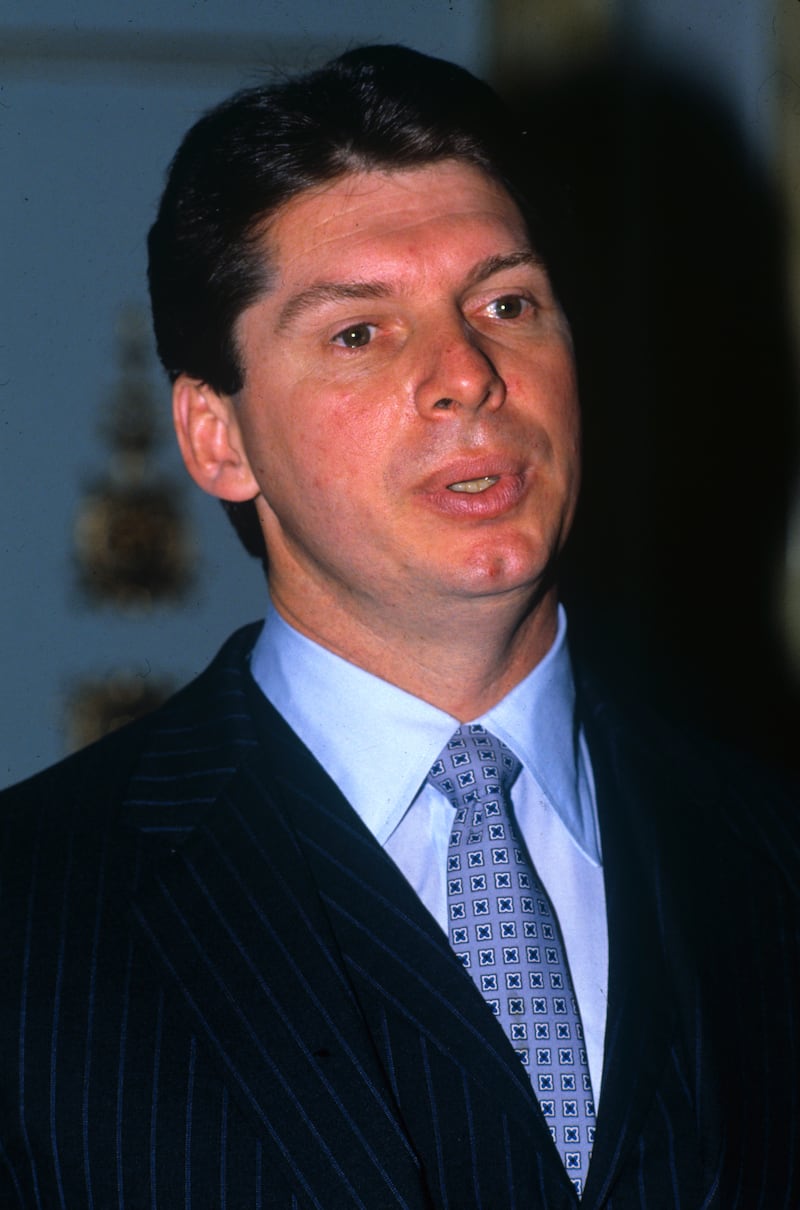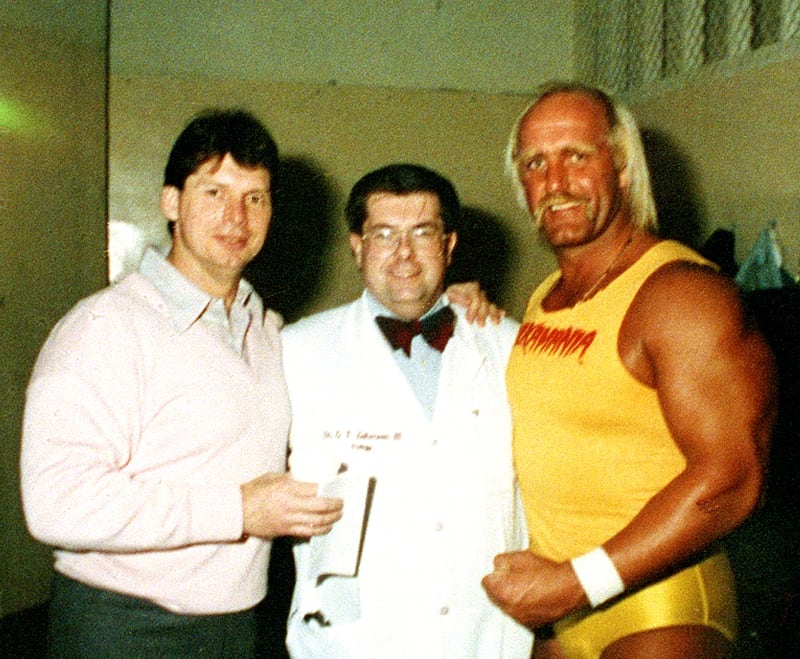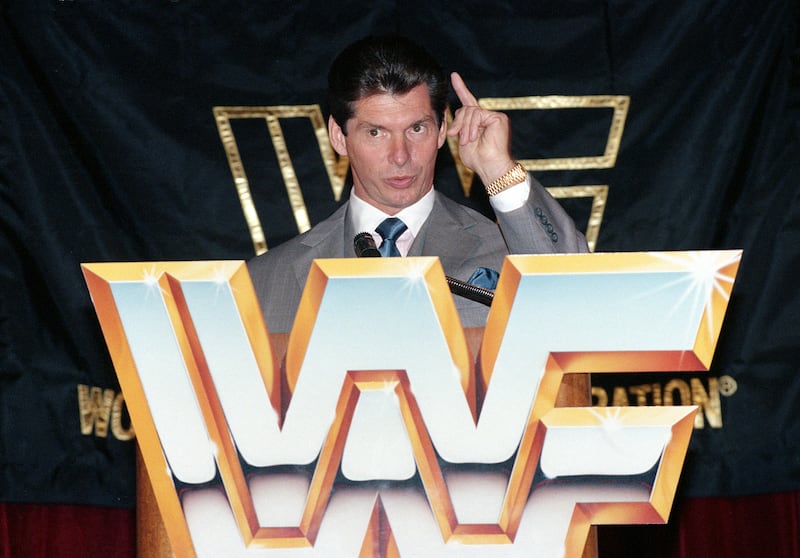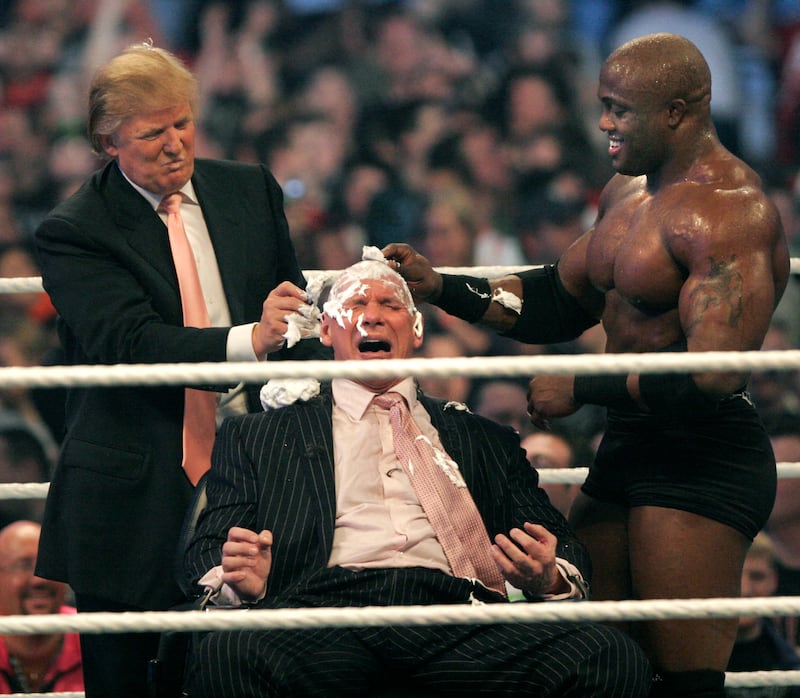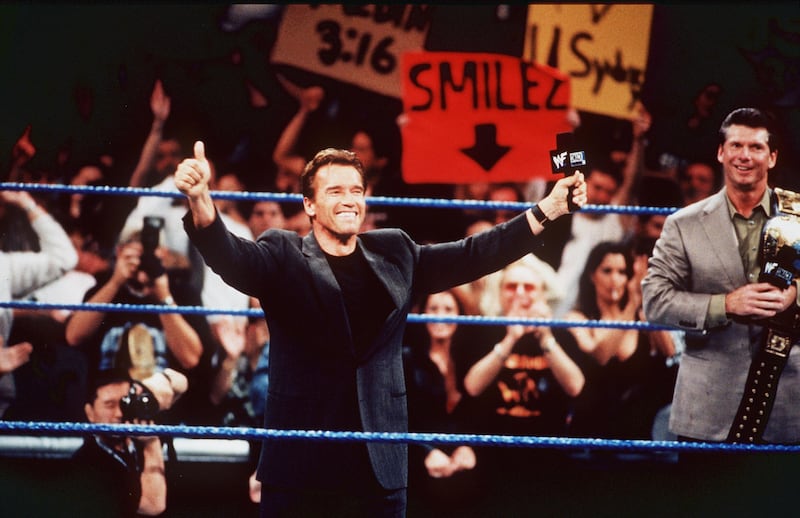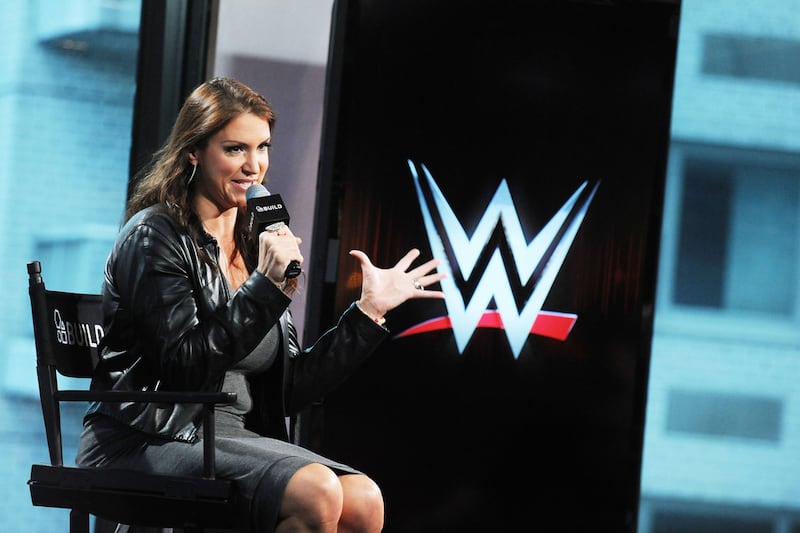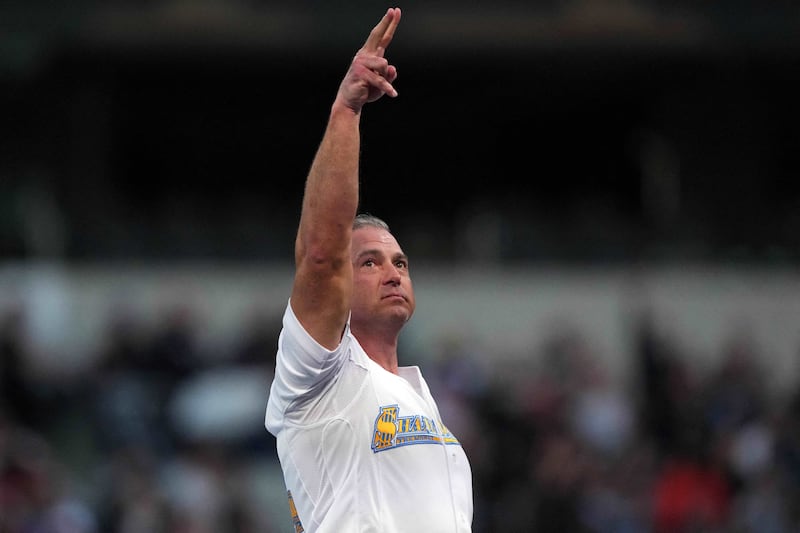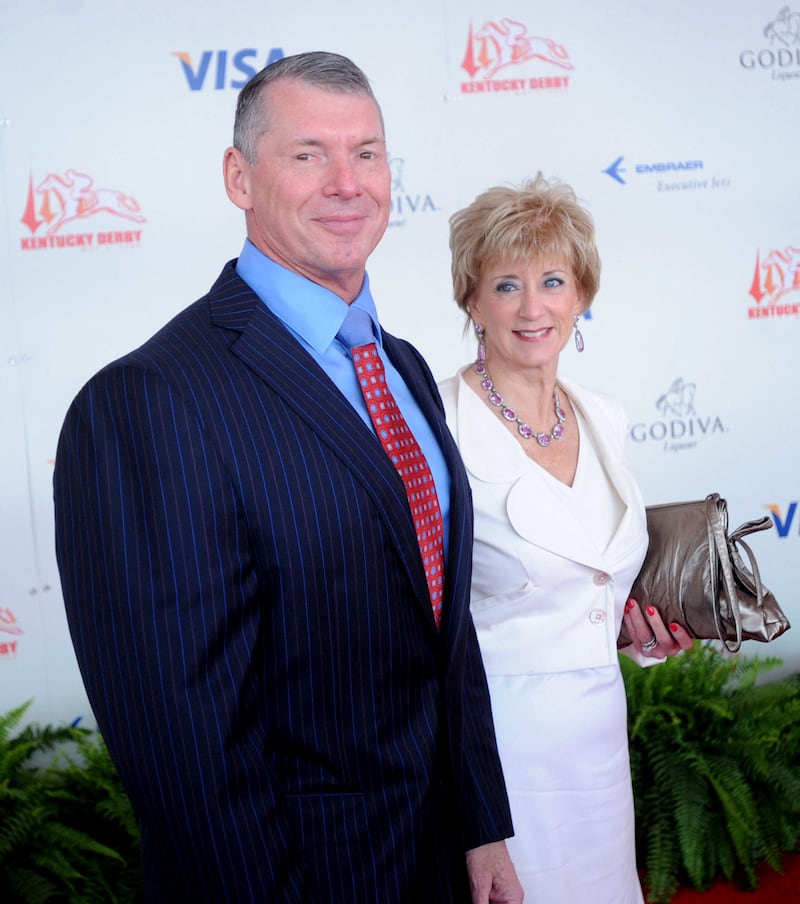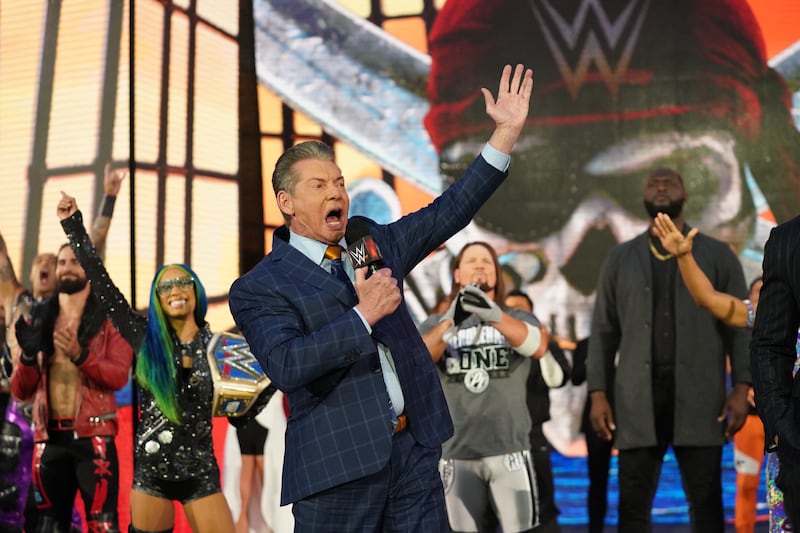It has all the elements of a storyline in Succession, the hit streaming series about a dysfunctional American media tycoon and his family.
But the intrigue behind last week’s $9.3 billion sale of Worldwide Wrestling Entertainment (WWE) highlights the fact that whatever the scriptwriters may come up with, truth can be stranger than fiction.
Like a WWE bout, sometimes you have to suspend belief at what you’re witnessing.
The background to the purchase of WWE by Endeavour, owner of UFC, involves scandal, an apparent rift between a father and his daughter, allegations of steroid abuse by wrestlers, sexual misconduct and multimillion-dollar hush money pay-offs to women.
And if that wasn’t enough, throw in a son-in-law, a former WWE star who thought he had reached the top of the organisation only to suddenly appear to have had the ground taken from under him.
At the centre of it all is Vince McMahon, 77, a grandfather who for the best part of half a century has ruled the WWE with an iron grip.
He bought his father out in 1982 for $1 million and under his control the organisation grew from a small-town family enterprise to a global behemoth based in Stamford, Connecticut.
In the process McMahon demonstrated a particular genius, an entrepreneurial flair, ruthlessness and vision to oversee the transformation of WWE into what it is today – the largest professional wrestling promotion in the world, with myriad valuable media and television offshoots.
Steroid scandals, hush money and rebirth
Peter Hutton, a former head of sport at Facebook owner Meta, told The National: “It is actually a remarkably forward-thinking organisation despite being family owned and run.
“It has continually got new story lines and it has reinvented itself around different stars.
“With WWE it is not the stars who are the brand – it is the brand itself. That is quite an achievement. It has built a business that has continually adapted; it has looked at different ways of telling its story.
“It established women wrestlers as genuine stars and adapted from what was an archaic view of women solely as cheerleaders at ringside. Now there are huge women’s stars.
"That’s another example of how they have adapted, the way society has adapted.”

Inevitably perhaps there have been scandals, all of which McMahon, a longstanding friend and supporter of Donald Trump, has managed to ride out, as well as challenges to the organisation’s hegemony.
In the 1990s and early noughties stories emerged of rampant steroid abuse by active wrestlers. In 2007 a former participant, Chris Benoit, killed his wife and son before committing suicide, allegedly because of the overuse of steroids and testosterone.
The case was given the soubriquet Roid Rage.
Almost a year ago however, his luck seemed to have run out. McMahon was forced to "retire" after an internal investigation highlighted a string of unseemly allegations, among them the use of company funds to pay millions to women to cover up incidents of infidelity and allegations of sexual misconduct.
A brief succession
It was time for a new beginning, with McMahon’s daughter Stephanie, who had long been groomed in a 25-year career with the company for the top job, installed as joint chief executive and chairwoman.
Paul Levesque, her wrestler husband better known by his ring name of Triple H, took on responsibility for the creative look and feel of events, putting him in charge of WWE’s storylines and in-ring action, which his father-in-law had long managed.
At the time McMahon said: “I’ve made mistakes, obviously, both personally and professionally. I’ve owned up to every single one of them and moved on.”
It seemed an opportune moment for a company reset. WWE‘s appeal was in part waning, considered somewhat stale. Rival organisations were starting to have an effect.
For six months all was quiet. Then in January this year McMahon, who was still the largest shareholder, orchestrated his comeback.
He was reappointed to the board, reshaped it by forcing out some members, replaced them with his own allies, and used that new boardroom power to install himself in his old job as executive chairman. Stephanie promptly resigned and left the company.

As revealed in a filing with the Securities and Exchange Commission, McMahon said he had to return to the company because negotiations over media rights and a “strategic alternatives review” required his “direct participation, leadership and support".
McMahon was quick to play down suggestions that the misconduct scandal had triggered the merger with UFC to create a $21 billion conglomerate whereby two of the biggest names in combat sports are now under a single umbrella. Endeavour, run by Ari Emanuel, will have a 51 per cent stake, WWE 49 per cent.
Asked if he’d have made the deal even without the scandal, McMahon said: “Absolutely. Because it makes sense. Nothing’s ever happened like this before and I’m always looking at what’s best for our stockholders and our company."
Huge popularity in Middle East
Hutton, who has led several media companies, is not surprised by the $9.3 billion price tag. “It is clearly an aggressive price,” he said. “But the McMahons are good business people. On that basis I’m not surprised at the figure. They have made a career of getting good deals.”
As chief executive of Ten Sports in Dubai between 2002 and 2010, Hutton made WWE a mainstay of the channel.
“We pinned our hopes on it, doubled down and it really worked for us. It was on three times a day, seven days a week. We gave it regular time slots so we could build an audience. It paid back hugely for us," he said.
So what is the secret of WWE’s success?
“They understand how audiences developed," he said.
"They have stuck to a formula which is proven by the data. They look closely at audience numbers, what story lines work and don’t work and have learnt from experience.
Embracing the TikTok generation
”They realised that if they make awareness of story lines to get their stars better known then social media was a hugely useful tactic for them. They enthusiastically adopted Instagram, Facebook and now TikTok.
“It is clearly the leading brand in its space and has been for a very long time. While there have been plenty of people who have tried to claim that territory, WWE has always ended up as the dominant force.
"Suddenly you have the dominant force in MMA [mixed martial arts] and the dominant force in wrestling. That is a pretty remarkable partnership.”
Hutton, whose career now includes an advisory role on the board of the Saudi Professional Football League, said: “They can grow the business even further and potentially cross pollinate story lines between UFC and WWE and see the stars of one turning up in the other circuit.

"There are also lots of back-office synergies in terms of the TV sales and the event management. Worldwide, those skills are very similar across the two organisations. “
Richard Gillis is the founder of Unofficial Partner, a leading sports business podcast. He too believes that WWE has been years ahead of its time.
Gillis says that the very simplicity of combat sports underpins their global success.
He cites the example of the Fertitta brothers who in 2001 bought the rights to the fledgling UFC for $2 million and sold them to WME-IMG, the forerunner of Endeavour, for $4 billion.
“They said, ‘fighting is elemental',“ Gillis said. “And they’re right. We understand it. We don’t need to need to know rules, there are no barriers to it. It is not a hard sell. We watch it and see it and understand it. It is that simple.”
No doubt. But you can be sure there will be many more twists and turns in the unfolding drama.
